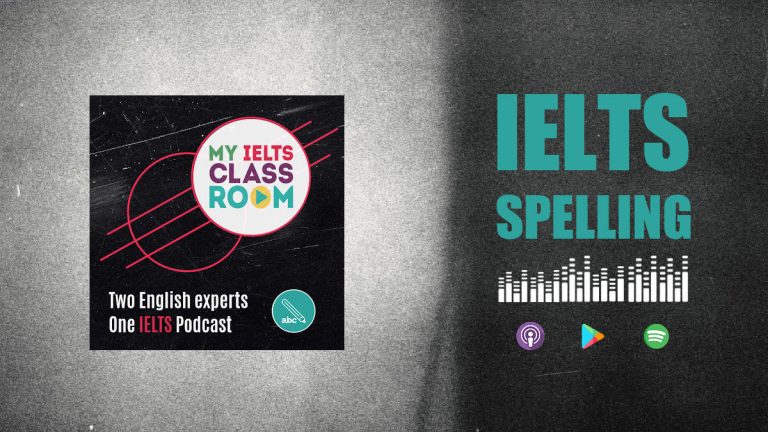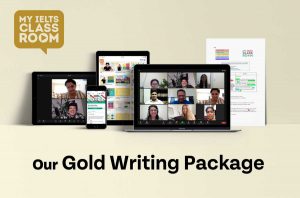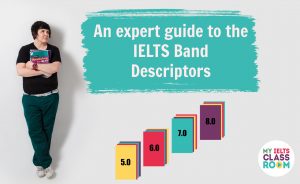
How to improve your IELTS spelling!
One component of your score for Lexical Resource in the IELTS writing exam is spelling. I am often asked how many IELTS spelling mistakes a student can make and still receive a 7.0. The answer is “it depends”. There is no fixed number of errors that automatically results in you getting a 5, 6, 7, or 8 for lexical resource. This is simply because not every spelling error is the same.
For example, if a student misspells “government” in the exam by spelling it “goverment” (i.e. they forget the “n”), it would not inhibit the reader’s understanding of their sentence as it is still clear which word the student is using. However, if the student misspells it like this “goberment” (i.e. they switch the “v” for a “b” and forget the “n”), this will have a far more serious impact on their score as now it is hard to understand which word they are attempting to write and this will impact on the intelligibility of their essay.
Similarly, misspelling a notoriously difficult word to spell such as “definitely” will have less of an impact on your score than misspelling a word that is deemed to be B1 or B2, such as “school” or “education”.
However, in general, I would say that if you are aiming for a 7.0 of higher in the exam, you should try to minimise your spelling errors to three or less.
IELTS spelling – An Introduction
However, there are some student for whom spelling even the most basic of words is an issue. Interestingly, this may have no connection at all to the student’s level. With so many people today learning English by watching TV, listening to music, or playing computer games, it is no wonder that spelling is becoming more and more of an issue.
To make matters worse, there is rarely any correlation between the way that a word is spelt in English and the way that it is pronounced. Therefore, if you have learned your vocabulary by listening, you may not have any idea of what a word looks like when it is written.
In fact, if you struggle with spelling, the absolute best advice that I could give you would be to start reading.
Ideally, you should be able to remember the spelling of words through “sight” rather than using rules or learning how to spell words individually. However, there are some basic IELTS spelling rules that all test-takers should know.
Want to learn how maximise your writing score with an ex-examiner? Then why not find out more about our Gold Writing Package. It contains everything you need to get a 7.0+ in Writing Task One and Task Two.

IELTS spelling – The Basics
What follows are some basic spelling rules that I would expect all test-takers who need to score a 6.0 or higher to know. Take a few moments to check that you know them all and are using them in your writing.
Adding “s” or “es” to make plural nouns and third-person verbs
- When we want to make a singular noun plural, we add an “-s” i.e. one frog, two frogs / one mistake, two mistakes / one hotel, two hotels.
- When we want to use a verb with “he”, “she”, or “it” (i.e. the third-person singular), we also add an “-s” i.e. I play, he plays / I live, she lives / I drink, it drinks
However, there are some occasions when we do not add an “s” to make a plural noun or a third-person verb, but instead add an “es”. This depends on the final letters at the end of the noun or verb that you are spelling.
- If your noun or verb ends in -s / -sh / -ch / – x, we add an “-es” to make the plural i.e. one bus, two buses / one dish, two dishes / I watch, he watches / I box, she boxes
There are also some irregular nouns and verbs. For example, we have one potato, but two tomatoes,and one self, but two shelves.
Words ending in -y
We also need to remember that words ending in “y” have different spelling rules.
- If you have a noun that ends in “-y” and want to make it plural, you will need to remove the “-y” and add “ies” i.e. one story, but two stories.
- If you have a verb that ends in “-y” and want to use it in the third-person singular, you will also need to remove the “y” and add “ies” i.e. I study, he studies
- If you have a verb that ends in “-y” and want to use it in the past, you will need to remove the “y” and add “ied” i.e. Yesterday, I tried a new dish
- if you have an adjective that is two syllables or more that ends in “-y” and would like to make a comparison, you need to remove the “y” and add “ier” i.e. My friend is luckier than me.
However, we do not change the “-y” to “-ier” if the ending of the word is “-ay” / “-ey” / “-oy” / “-uy”. Instead, we use usually spelling rules.
When you need to double a letter
When you have a one-syllable word and you would like to use it int the past, with -ing, or as a comparison, you may need to double the final letter. This happened when the word ends in a vowel + consonant. For example,
- STOP: I stopped the bus / The bus is stopping
- SWIM: I am swimming in the ocean today.
- HOT: It is hotter today than yesterday
Please be careful with this rule. It only works when we have one vowel followed by one consonant. For example, if you have the word “HELP” we do NOT double the “p” in the past because there is an “l” between the vowel (e) and the final consonant (p) i.e. I helped my friend las week.
In the same way, if you have TWO vowels before the consonant, you also do NOT need to double the consonant. For example, if you have the verb “need” we do NOT double the “-d” as we have two “-e” before it, i.e. I needed a new pair of shoes last month.
Common IELTS Spelling errors
Once you know the basic rules, you can move on to more complex IELTS spelling rules. I have noticed that students tend to have problem with combinations of vowels (for example in words like received) and with silent or missing letters (for example in the word environment).
In the lesson, Nick and I will test your knowledge of these types of words, and also challenge you to see if you can spell the 10 most commonly misspelt words in English!
Want to know how the examiner will apply the band descriptors when marking your IELTS essay?
Then download a copy of our FREE e-book, which explains how each of the four marking criteria is applied and includes the most common errors made by test-takers. Just click here for your copy.

